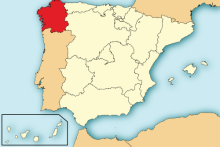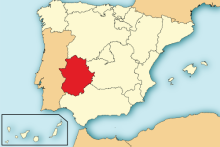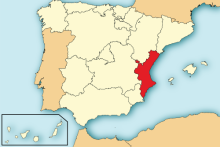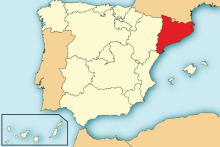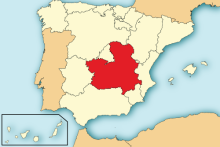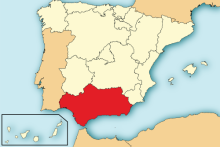Autonomous Community of Madrid

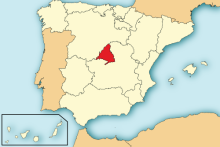
The regionalised climatic scenarios defined by the General Department of Environmental Evaluation return increases in average temperatures of between 2.0 and 3.4°C in the Autonomous Community of Madrid by the year 2050 in comparison with the period between 1961 and 1990. The figures for precipitation are not conclusive and the results drawn from the model show positive variations (increases of between 50 and 100 mm per year) and negative variations (reduction of up to 200 mm in the annual average precipitation level) depending on the area in the region.
Studies on the possible impact of these changes on the sectors that will probably be affected include water resources, tourism and forestry. The corresponding adaptation measures are being drawn up for said sectors in the new Strategy for Air Quality and Climate Change of the Autonomous Community of Madrid 2013-2020. This document will stand as the framework for various actions designed to reduce and adapt to climate change in the Autonomous Community of Madrid, in coordination with measures aimed at improving air quality.
1.A. Marco general jurídico y políticas de adaptación | |||
|---|---|---|---|
Ley, Estrategia, Plan, Programa | Fecha de aprobación | Régimen jurídico | Enlaces/doc. relacionada |
Estrategia de Calidad del Aire y Cambio Climático de la Comunidad de Madrid. Plan Azul+ (2013-2020) | 3 de abril de 2014 | Orden 665/2014, de 3 de abril, del Consejero de Medio Ambiente y Ordenación del territorio | |
Revisión de la Estrategia de Calidad del Aire y Cambio Climático de la Comunidad de Madrid. Plan Azul + (2013-2020) | 8 de abril de 2019 |
| |
1.B. Estructura de coordinación y gestión institucional para la adaptación al cambio climático. Gobernanza horizontal y vertical | ||||
|---|---|---|---|---|
|
| Observaciones | Enlaces/doc. relacionada | Actores representados[1] |
Organismo responsable | Consejería Medio Ambiente, Ordenación del Territorio y Sostenibilidad |
| Administración autonómica | |
Órgano de coordinación | Dirección General de Sostenibilidad y Cambio Climático | Enlace | Administración autonómica | |
Órgano de participación | Comisión Interdepartamental de Cambio Climático y Agenda 2030 | Formado por representantes de todas las Consejerías que tienen competencia en materias relacionadas con el cambio climático. Sus funciones son: a) Formulación de propuestas dirigidas a asegurar el desarrollo de la Estrategia regional sobre calidad del aire y cambio climático y su cumplimiento. b) Emisión de informe previo a la aprobación de la Estrategia regional sobre calidad del aire y cambio climático, así como a sus modificaciones. c) Evaluación, dentro de las previsiones que anualmente establezcan las leyes de presupuestos regionales, de los recursos y necesidades presupuestarias y propuesta de asignación de los fondos públicos destinados a las diferentes medidas que integren la Estrategia regional sobre calidad del aire y cambio climático. d) Cualquier otra competencia que le pueda ser atribuida por el órgano competente. | Enlace | |
Órgano de participación | Comité Científico Técnico | Realizar informes técnicos sobre:
También prestará apoyo y asesoramiento para determinar las líneas de actuación prioritarias en los planes de mitigación y adaptación regionales y podrán realizar evaluaciones técnicas previas de las medidas que se vayan a implementar en la región | Formado por expertos de distintas entidades públicas, privadas e independientes reconocidas en el ámbito de la investigación y la ciencia, tanto a nivel nacional como internacional | |
Otros | Mesa de la Movilidad Eléctrica Comunidad de Madrid | Órgano formado por Consejerías relacionadas con la movilidad y la energía en la Comunidad de Madrid, así como la FEMP, Ayuntamiento de Madrid, Asociaciones de fabricantes de vehículos, etc. Principal objetivo la descarbonización del transporte en la región de Madrid. | Administración central, autonómica, local, asociaciones de empresas, etc. | |
Participación en proyecto VEGGAP | La Comunidad de Madrid participa en calidad de colaborador para aportar conocimientos y datos que sean de utilidad. | Ciudades de Bolonia, Milán y Madrid, la Universidad Politécnica de Madrid, y el centro de investigación ENEA (coordinador del proyecto), junto con los centros CREA, ARIANET Y MEEO. | ||
[1] Administración central, autonómica, local, ONG, academia, empresas, etc.
COMUNIDAD DE MADRID
DIRECCIÓN GENERAL DE CALIDAD Y EVALUACIÓN AMBIENTAL
C/ Alcalá nº 16
28014 MADRID
www.madrid.org




